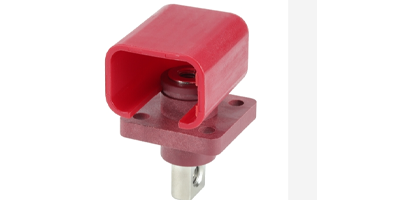In electrical systems, square through-wall terminals are key. In the fields of industry, commerce, and smart home, it is like a solid bridge to ensure current transmission. Type IF - FM6 - 3037 - 120A - C stands out for its excellent characteristics. Mastering its usage is to build a reliable electrical network foundation, build a strong line of defense, and start a new journey of accurate, efficient and safe electrical connection.
I. Inspection and Preparation
Before using the IF - FM6 - 3037 - 120A - C Square Shaped Wall - Through Type Terminal, it is crucial to conduct a thorough inspection. Examine the terminal for any visible signs of damage, such as cracks, dents, or loose components. Ensure that the terminal is clean and free from any debris or contaminants that could potentially affect its performance.
Check the material specifications, which in this case are PA66/H62 Brass. Familiarize yourself with the current rating of 120A and the voltage rating of 1000V DC Max., as well as the dielectric strength of 3000V. This knowledge will help you determine if the terminal is suitable for your specific electrical application.
II. Installation
Selecting the Mounting Location
Choose an appropriate location on the wall or enclosure where the terminal will be installed. Ensure that the surface is flat, sturdy, and capable of supporting the terminal's weight and any associated electrical components. Consider factors such as accessibility for wiring connections and proximity to the power source or electrical equipment it will be connected to.
Mounting the Terminal
Align the terminal with the pre - drilled mounting holes on the chosen surface. Insert the appropriate screws (such as M6 screws, as per the provided mounting hole dimension) through the terminal's mounting holes and tighten them securely. Use a torque wrench to ensure that the screws are tightened to the recommended torque value to prevent over - tightening or loosening over time.
Wiring Connections
Identify the incoming and outgoing wires for your electrical circuit. Strip the ends of the wires to the appropriate length, ensuring that the exposed conductor is clean and free from oxidation. Insert the wires into the designated terminal connection points. For this particular terminal, follow the connection markings or instructions provided. Tighten the wire connection terminals using the appropriate tools, such as a screwdriver or wrench, to ensure a solid electrical connection. Make sure that the wire connections are properly insulated to prevent any short circuits.
III. Testing and Verification
Insulation Resistance Testing
Before energizing the circuit, perform an insulation resistance test using a suitable insulation resistance tester. Connect the tester probes to the appropriate terminals or conductors and measure the insulation resistance. The measured value should be well above the minimum acceptable value specified for the terminal. If the insulation resistance is below the required level, investigate and rectify any potential insulation issues, such as damaged insulation on the wires or moisture ingress.
Voltage and Current Testing
Once the insulation resistance test is satisfactory, gradually apply voltage to the circuit in a controlled manner. Use a voltmeter and ammeter to measure the voltage across the terminal and the current flowing through it. Ensure that the voltage and current values are within the rated limits of the terminal. Monitor the terminal for any signs of overheating, arcing, or abnormal behavior during the testing process. If any issues are detected, immediately disconnect the power and troubleshoot the problem.
IV. Regular Maintenance
Visual Inspection
Periodically perform visual inspections of the terminal. Check for any signs of wear and tear, such as loose connections, frayed wires, or corrosion. Inspect the terminal body for any signs of physical damage or degradation. If any issues are identified, address them promptly to prevent potential electrical failures.
Cleaning
Keep the terminal clean by removing any dust, dirt, or debris that may accumulate over time. Use a dry, clean cloth or a gentle brush to clean the terminal surface. Avoid using harsh chemicals or solvents that could damage the terminal's material or insulation.
Tightening of Connections
Periodically check and tighten the wire connections to ensure that they remain secure. Loose connections can lead to increased electrical resistance, overheating, and potential electrical hazards. Use the appropriate tools to tighten the connection terminals as needed.
By following these steps, you can effectively use the IF - FM6 - 3037 - 120A - C Square Shaped Wall - Through Type Terminal in your electrical applications, ensuring reliable and safe operation.
